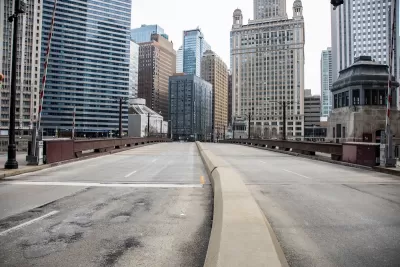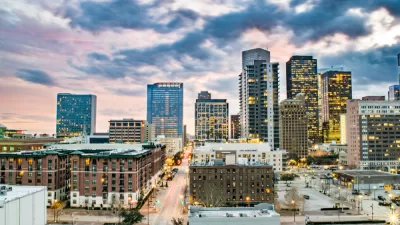Research shows that the “donut effect” hollowing out central business districts since the pandemic continues to cause economic decline in the 12 largest American cities.

New research from Stanford University economist Nicholas Bloom indicates that the structure of some of the largest U.S. cities remains fundamentally changed since the Covid-19 pandemic. Bloom has dubbed this the “donut effect,” referring to “the hollowing out of big-city financial districts, the rising attraction of surrounding areas, and the impacts on local economies.”
Bloom and his team conclude that downtown economies are not, in fact, bouncing back after the pandemic. According to Bloom, the 12 largest U.S. cities have lost 8 percent of their downtown residents, with two-thirds of those households migrating to suburbs. There was also an attendant drop in the number in businesses in downtowns in major metro areas. “The reason, according to the study’s authors, is because of the staying power of working from home – particularly for high-skilled workers who made up the bulk of downtown exits during the pandemic.”
This means a sharp drop in tax revenue and economic activity for cities, where officials must make difficult decisions to accommodate lower budgets. For public transit agencies, changes in travel patterns have led to sometimes devastating cuts in budgets and service.
Bloom points to one potential benefit of the effect, provided that housing costs go down. “As essential workers and others with lower-paying, in-person jobs get priced out of the suburbs, they might be able to afford living again in the big cities where they need to be every day.”
The donut effect is notably absent or limited in small and medium-sized cities, where more jobs require in-person attendance and housing costs are lower.
FULL STORY: For major U.S. cities, the ‘donut effect’ persists

Alabama: Trump Terminates Settlements for Black Communities Harmed By Raw Sewage
Trump deemed the landmark civil rights agreement “illegal DEI and environmental justice policy.”

Planetizen Federal Action Tracker
A weekly monitor of how Trump’s orders and actions are impacting planners and planning in America.

Why Should We Subsidize Public Transportation?
Many public transit agencies face financial stress due to rising costs, declining fare revenue, and declining subsidies. Transit advocates must provide a strong business case for increasing public transit funding.

Understanding Road Diets
An explainer from Momentum highlights the advantages of reducing vehicle lanes in favor of more bike, transit, and pedestrian infrastructure.

New California Law Regulates Warehouse Pollution
A new law tightens building and emissions regulations for large distribution warehouses to mitigate air pollution and traffic in surrounding communities.

Phoenix Announces Opening Date for Light Rail Extension
The South Central extension will connect South Phoenix to downtown and other major hubs starting on June 7.
Urban Design for Planners 1: Software Tools
This six-course series explores essential urban design concepts using open source software and equips planners with the tools they need to participate fully in the urban design process.
Planning for Universal Design
Learn the tools for implementing Universal Design in planning regulations.
Caltrans
Smith Gee Studio
Institute for Housing and Urban Development Studies (IHS)
City of Grandview
Harvard GSD Executive Education
Toledo-Lucas County Plan Commissions
Salt Lake City
NYU Wagner Graduate School of Public Service





























